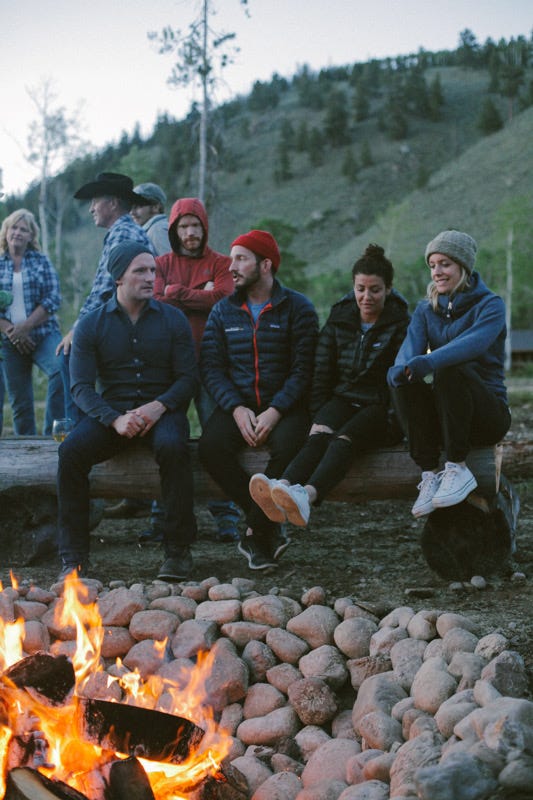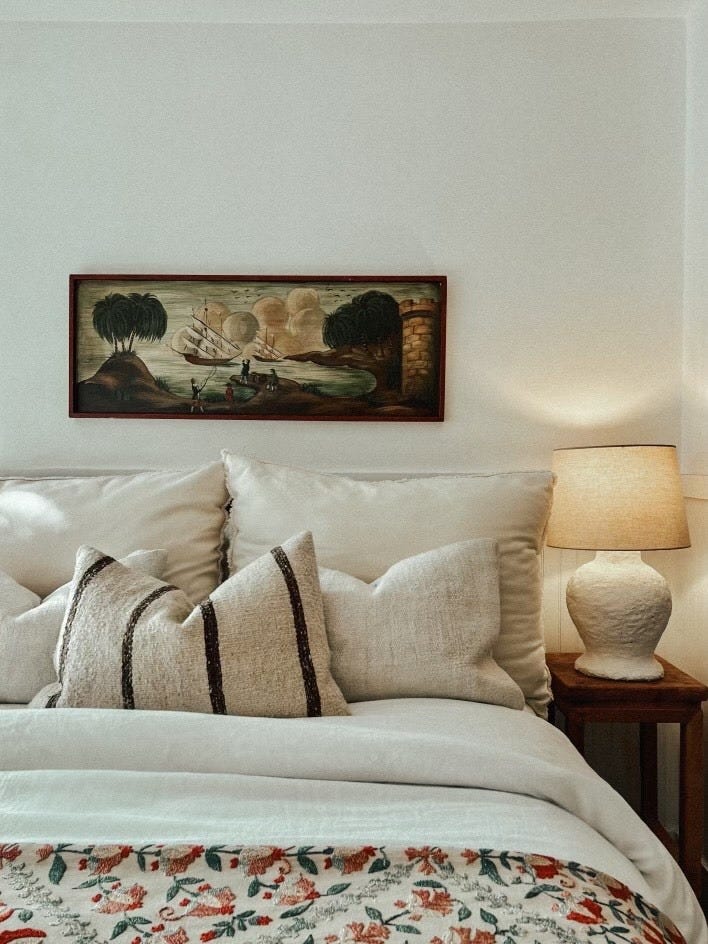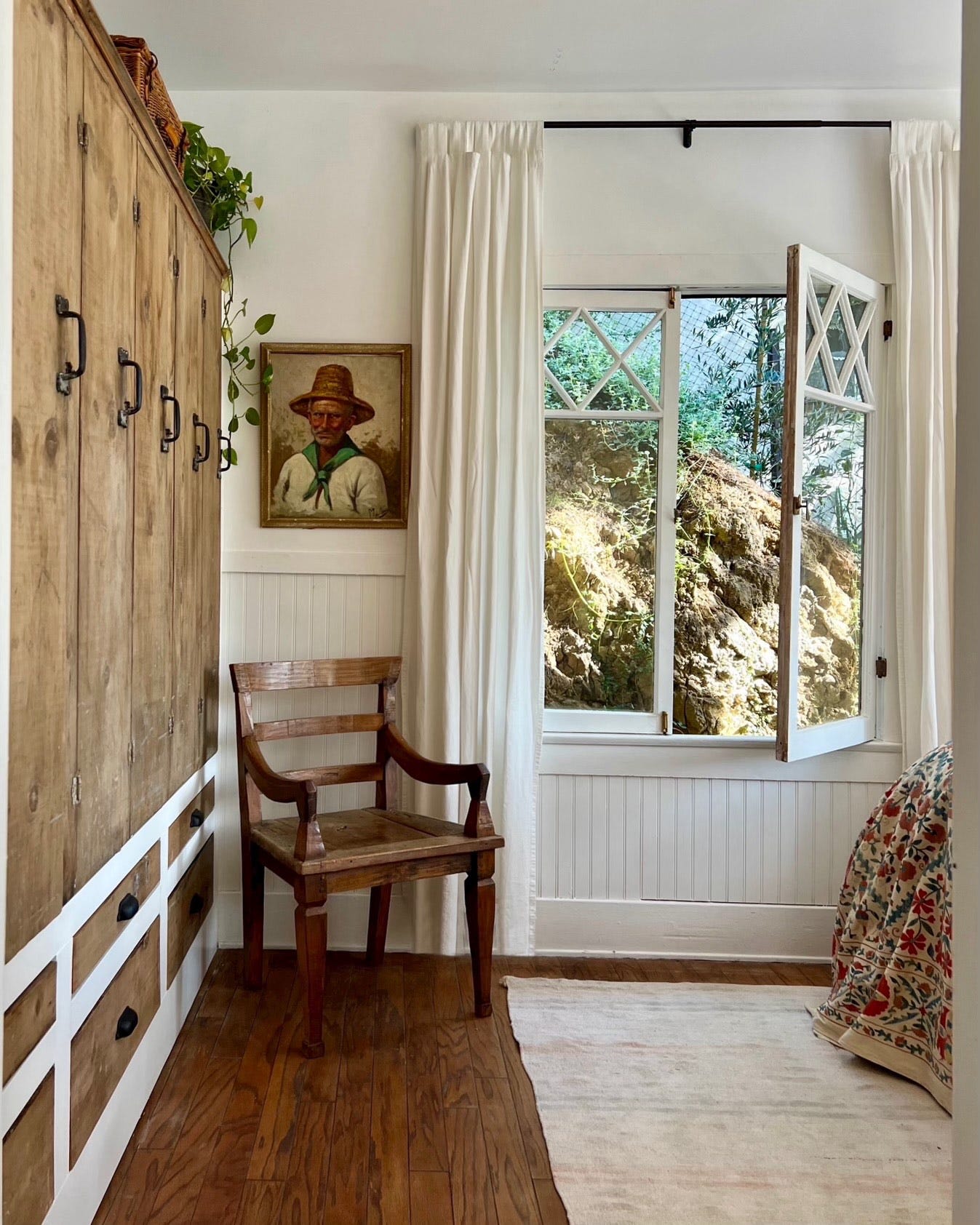Off-grid and unbothered
Writer Jedidiah Jenkins answers the Shelter Questionnaire.
I’m delighted to bring you something different this week: an interview with Jedidiah Jenkins, one of the most engaging thinkers I know. He’s just launched a Substack of his own, so I thought we could give him a proper welcome.
Jed and I met almost a decade ago on a dude ranch in Wyoming, where there was zero cell service and unreliable WiFi at the main lodge. Around the campfire, everyone told jokes and shared talents. Someone (I won’t say who) picked up a crumpled beer can from the ground, and people watched in amazement as it reformed itself before their eyes, refilled, and produced another full drink.
But that was just a trick; what Jed did was actual magic, as only the best storytelling can be. He regaled a group of 17 strangers with what he learned on his adventures riding a bicycle from the top of Oregon to the tip of Patagonia. As the son of a couple who walked across America in 1979, wandering is in his blood.
More than just a feat of endurance, this journey held secrets and personal revelations — about his wrestles with faith, his self discovery as a gay Tennesseean, and so much more — all of which he went on to unpack in his first book, To Shake the Sleeping Self. Of course he didn’t stop there: Next came Like Streams to the Ocean (exploring who we are and why we’re here) and Mother, Nature (about his firecracker of a mom).
In preparation for his fourth book, he holed up in a 100-square-foot shed in the Colorado mountains for 8.5 weeks during election season, off-grid and unbothered by push notifications. He then returned home to Los Angeles just before it caught fire. Here’s what he observed:
California was colonized with the European belief that nature was to be dominated and controlled. Bent to our will. We are paying for that foolishness today with tragedy and loss. Families are reaping what they did not sow.
When I was in Japan, I was taken by their traditional architecture and interior design. We often sat on the floor. The rooms were sparse. The walls made of wood and paper. Beds were rolled out on the floor. Where was all the furniture? Where was all the stuff?
Well, one major reason is that Japan’s architecture developed in one of the most earthquake prone places on earth. The homes are built to be easily rebuilt. Flexible. They are built bespoke to the place they exist. Not in spite of it.
I love California and I am so sad for these communities and I am inspired by the helping hands and I hope we can make these broken dreams as whole as possible and comfort the injured spirits, and I hope we find a better way to live here.
It was with all this in mind that I wondered if he might have some interesting observations about the meaning of “home.” (For thoughts like these and much more, subscribe to his newsletter below.)
Some quick backstory on the Shelter Questionnaire. As a parlor game, Victorian teens used to fill out a personality quiz with questions like:
"If not yourself, who would you be?"
"What is your idea of misery?"
"What is the most overrated virtue?"
The philosopher Marcel Proust took it at 19, and his answers were so good they named the whole damn thing after him. This is my spin on that idea, focused on home + travel. The questions are designed to provoke a range of answers: short or long, light-hearted or poignant, serious or funny. Let’s dive in.
Jedidiah Jenkins answers the Shelter Questionnaire
What was your favorite thing about your childhood home?
The forest in the back. The creek full of turtles.
If you had to flee, what would you save from your home?
My old journals. I have drawings and fledgling thinking in them: a handwritten time capsule.
What is the next home project you’re excited about? One you’re dreading?
I’ve really just settled into this little Beachwood cabin. So I’m enjoying the completeness of it. There are always tinkerings and twists, but for now, I have a crush on my house and we’re going on excellent dates.
What is your favorite imperfection about your home?
It’s up 25 stairs, and you have to walk through my friends’ driveway to get here. But, it makes my home invisible from the road and I feel safe and secret.
What is your perfect day at home?
The second day after coming home from a long trip. I have work to do. It’s 60 degrees and sunny in the morning. I am jet-lagged in the right direction so I wake up at 6am. I go and drink my coffee at a coffee shop. I read a New Yorker article to get my brain going. Then I write for a few hours. The air is still crispy because it’s February and so I go for a hike with a friend. I return from the hike to text messages informing me that my friends crave a fire pit hang. They come over. We make cocktails. We light a fire. We bring out the speaker and listen to music. We talk until midnight. I leave them chatting by the fire and go to bed.
What do you most detest in a houseguest?
Exploded suitcases in the living room.
What do you most value in a houseguest?
I love a houseguest who is keen on discovering what I love. I want them to be thrilled about discovering Los Angeles, letting me show it to them, but also discovering my everyday life. The coffeeshops I sit at. The places I stroll. The shade I sit in. The carwash. I love a guest who reminds me that my life is interesting.
Is there a signature meal or drink you wish to be known for?
I’m known for my fire pit conversations that go on and on. I am not known for cooking, mixology, or even setting out snacks. I’m terrible at that. But if you want to talk, I’m your guy.
What is your most treasured possession?
My BDDW ceramic porn cups. Google them. They’re extraordinary, and each one is one of a kind.
Best album to listen to while driving?
The soundtrack to Flow, the Latvian animated film about a cat in a flood. The soundtrack has become my whole world.
What is the quality you most admire in a travel companion?
Easygoing flexibility. Circumstances change, and plans fall apart. If you can’t bend with the wind, I can’t travel with you.
Where would you like to live?
I love living where I live. But I want to live in an old Pasadena-style Craftsman home one day.
Seth Putnam is an editor and writer in Chicago. He lives with his wife, son, and daughter in a 1920s home that is the epitome of a work in progress. See more of his work here.
"Instructions for living a life: Pay attention. Be astonished. Tell about it." —Mary Oliver






There have to be so many stories about his epic adventure! Interesting guy…